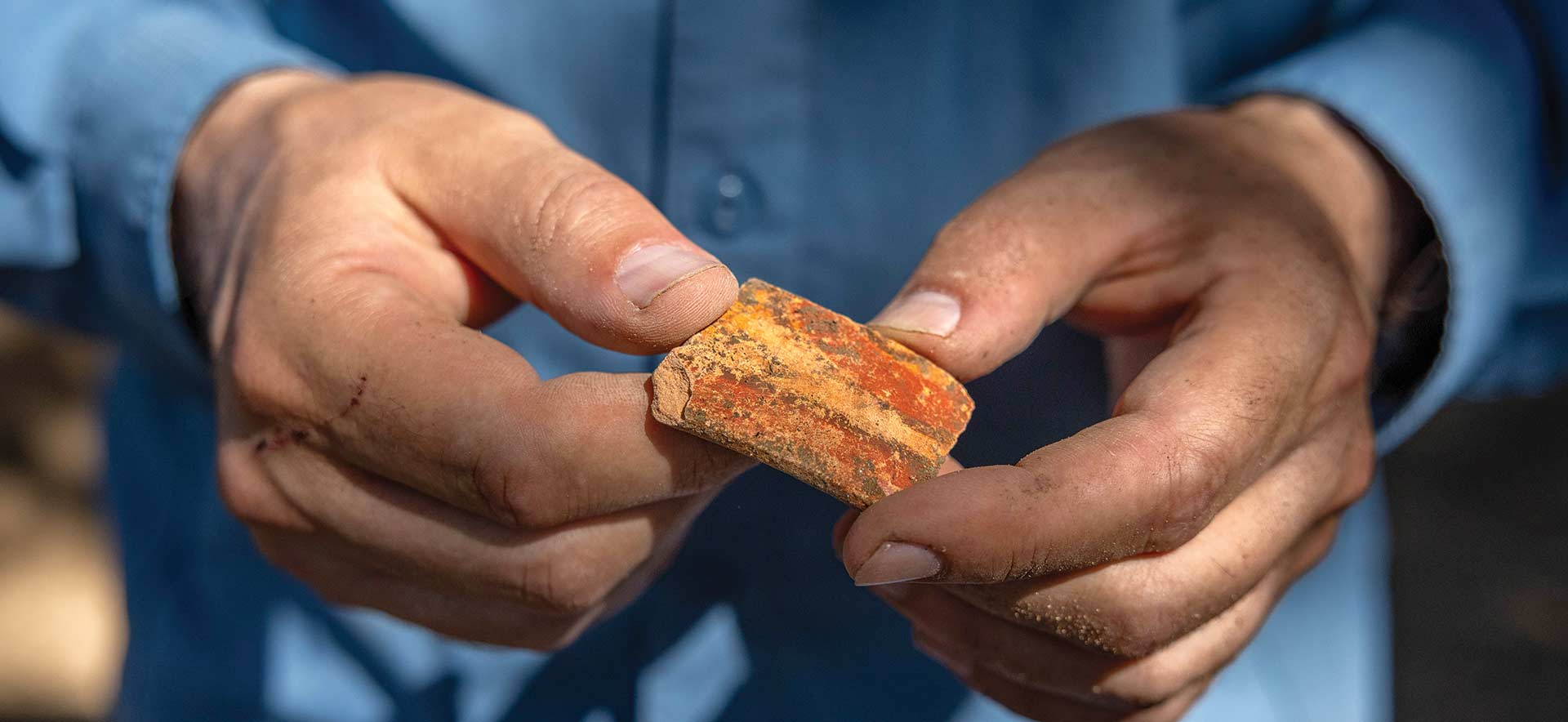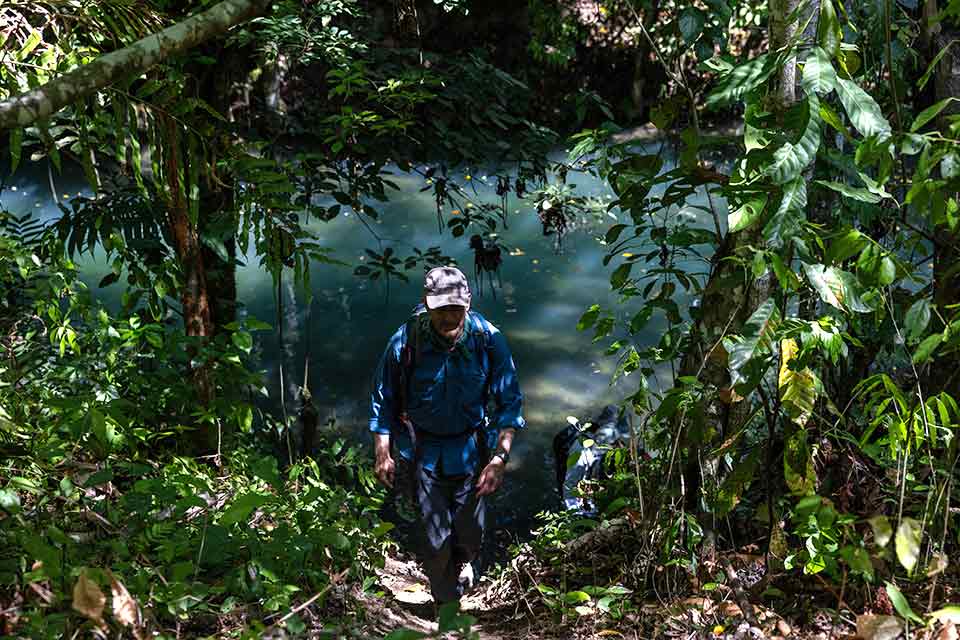How Did Ancient Maya Civilization End?

Photo Credit: Gaelen Morse
By Lawrence Goodman
FOR DECADES, scholars have argued about what caused the so-called Maya collapse. Several million Maya lived in southeastern Mexico and northern Central America in the early 800s. A hundred years later, dozens of once-thriving Maya cities were almost entirely depopulated. What went wrong?
Charles Golden, P’28, a Brandeis anthropologist, and Andrew Scherer, a bioarchaeologist at Brown, contest theories that attribute the collapse to increased warfare, drought, agricultural failure, or overpopulation. The longtime collaborators go even further than that, arguing “collapse” is entirely the wrong way to describe what happened.
In summer 2023, they excavated a 20-foot section of a wall at Lacanjá Tzeltal, an archaeological site in southeastern Mexico that was once a major city in the Sak Tz’i’ kingdom. The wall is now only a few feet high, just boulders piled on top of one another.
“It doesn’t look like much,” acknowledges Scherer. “The cows go right over it.”
But when the Maya lived there, the wall was probably 8 to 15 feet high, and helped defend the kingdom’s center. Palisades driven into the ground between the rocks were likely latticed with branches, small trees, or thorny plants for extra protection.
Golden and Scherer believe the wall was built centuries before the Maya collapse. In earlier excavations near Piedras Negras in Guatemala, they also found small hilltop hilltop fortresses dating back nearly 1,000 years before the collapse.
It stands to reason these defensive walls were built because “warfare was long a part of everyday Maya life,” says Golden. In fact, he points out, the evidence for a sudden surge in warfare between Maya citystates during the 9th century, leading to widespread destruction and mass migration, is scant to nonexistent. For instance, inscriptions on monuments dating from this time mention war even less frequently than in earlier periods.
And what about the drought and overpopulation theory?
Twelve miles from the Lacanjá Tzeltal wall, Brown paleoethnobotanist Shanti Morell-Hart stands in a hole, clawing at the dirt walls around her. She wears two pairs of latex gloves, the first to absorb the sweat beading on her hands, the second to avoid contaminating the soil samples she’s collecting. Every few inches, she drives her fingers into the earth, loosening enough soil to fill a small bag or a test tube.
A recent drought has left the earth hardpacked. Morell-Hart’s hands ache from all the digging. “I wish I’d done two years of kung fu finger exercises in preparation,” she says.
Analysis of the soil samples she collects shows the Maya diet was more varied than previously thought. The Maya grew root crops like sweet potatoes and cassava along with maize. An analysis of human tooth residue shows they also ate nuts; berries; inner tree bark; and even leaves from prickly chaya, a relative of stinging spurge.
This relatively diverse diet buffered the Maya against drought risk. Though it’s possible climate and natural calamities diminished their food supply, many Maya could have adapted to the change, Morell-Hart says.
Golden and Scherer argue the Maya collapse was less a collapse and more a gradual process, occurring in fits and starts, and for different reasons in different places. “The end of a kingdom is more often […] a drawn-out whisper rather than a noisy flash,” they and their co-authors wrote in a 2016 article.
Most likely, a breakdown in governance led to the demise of the Maya. Their kingdoms expanded, and what had been well-run states became more loosely and inefficiently governed. Monarchs had to rely on lowerlevel lords and nobles, who had their own agendas or were just less-capable rulers.
“Dynasties were victims of their own success,” Golden and Scherer wrote in 2012. “The very processes that royal dynasties used to expand their authority and grow the territorial extent of the kingdom moved the polity from a strongly centralized community to a weakening and eventually failed state of atomized communities.”
